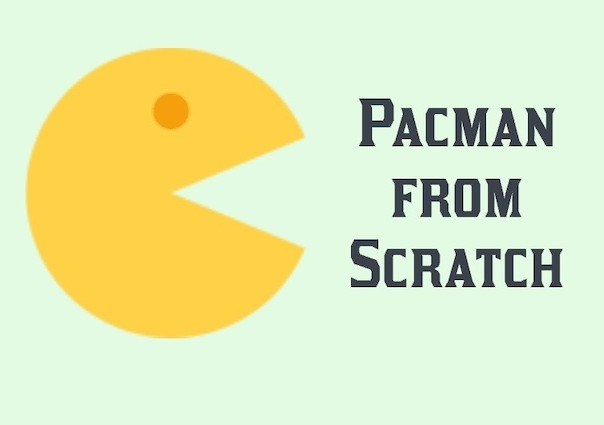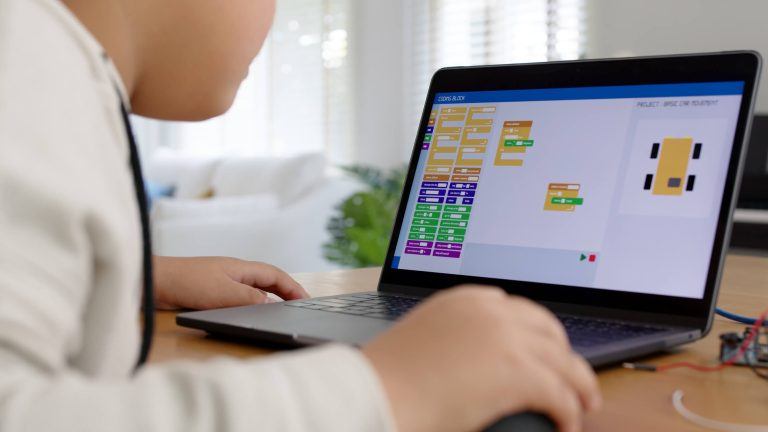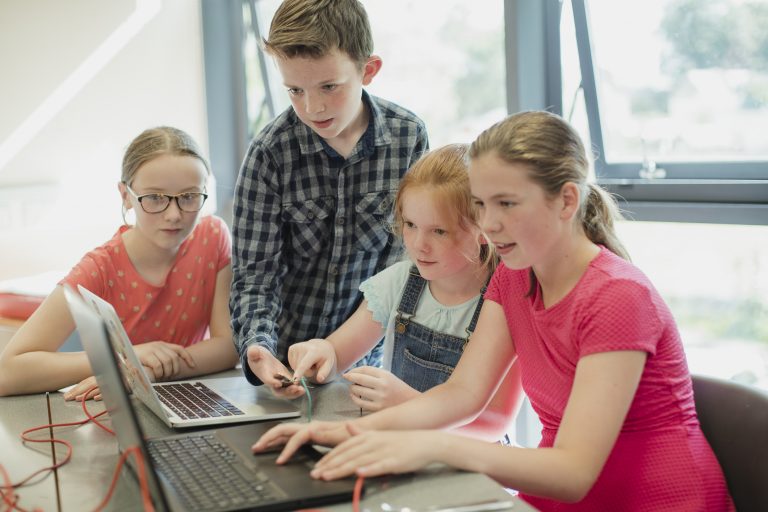Khan Academy is one of the giants of the Edtech world. Backed by Google and Bill Gates himself, it has provided free online math, science, test prep, and computing courses to hundreds of millions of students around the world. But is there any truth to the rave reviews people are giving it, or is it all media hype? As a blog devoted to kids coding, we decided to dig into Khan Academy’s kids computer science courses and give them a test drive. We hope you enjoy our Khan Academy review.
Table of Contents
What is Khan Academy?

Mission and Vision
To put it briefly, Khan Academy is an online academy. Their mission is to “change education for the better by providing free world-class education to anyone anywhere”
While it does have a Computer Programming section, they largely rose to fame due to their math courses, which are recorded by Sal Khan, a retired financial analyst. Khan Academy also teaches other topics such as Biology, Organic Chemistry, English, and test prep.
Founded by Salman Khan in 2006, this MOOC (Massive Open Online Courses) now has more than 10 million monthly visitors, and is used by individuals and schools around the world. Not bad at all, considering it only managed an average of 144,000 monthly visitors at the start of 2010.
As a nonprofit organization, all the content on the website is free to access and consume. Once you pick a class you want to complete, you are given a full overview of your curriculum and the tasks you are expected to complete. The lessons are taught through a video walk-through series, and then you’re given projects and tasks to complete; Khan Academy’s way of ensuring you understood the lesson. Once you’ve completed each project and it’s been given a passing grade, you can then move on to the next lesson.
Khan Academy’s mission and vision and the way that they have built their platform into the behemoth that it is today is most commendable.
Our Verdict: A+
User Interface & Navigation
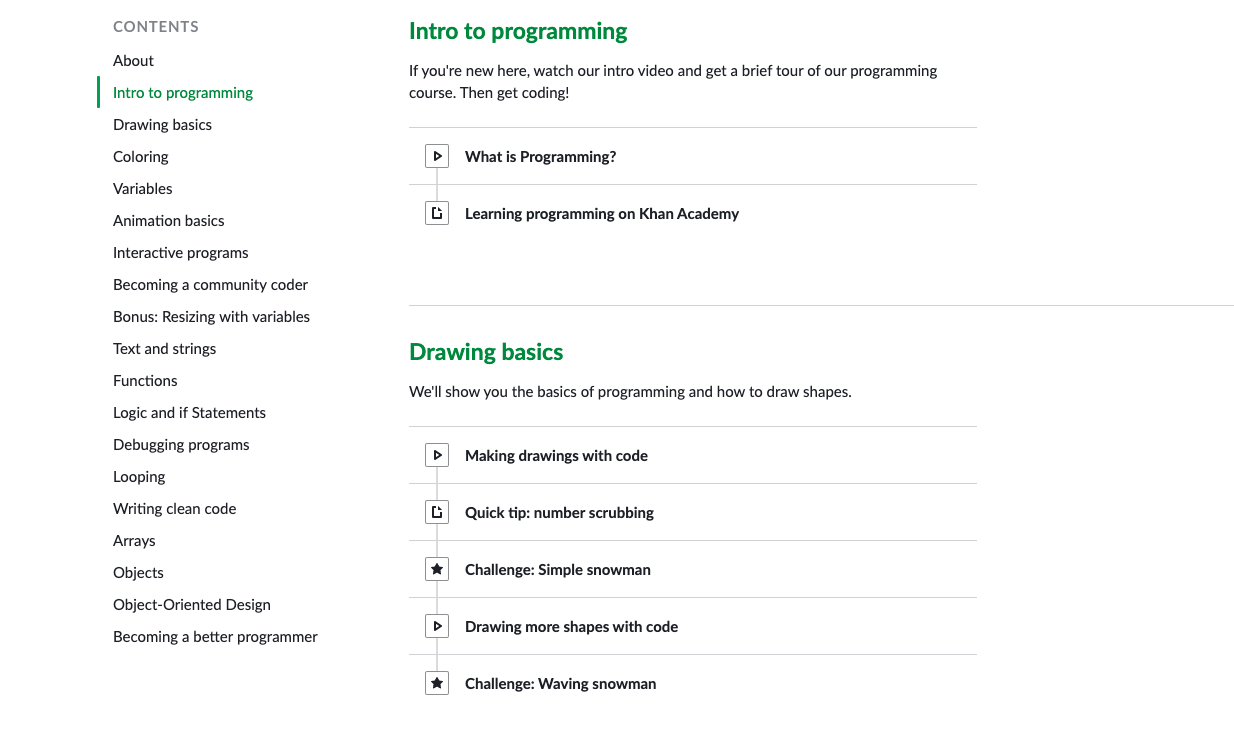
What we (and we’re sure a lot of people) appreciate with Khan Academy is its ability to make most any learning process less intimidating. This is especially useful for first-time programmers or kids learning to code.
The whole website is very simple and straightforward. The design is quite professional, and it has enough elements and creative content to keep users on-page.
Aesthetically speaking, the website (and all its subpages) make good use of color. Certain colors highlight the important parts and drag your eye to them first (like your task list and curriculum on a green table to the side against a white background), while other shades and neutrals keep everything looking clean and professional.
Navigation is, like the website, simple and straightforward. Again, definitely something to take note of if you’re teaching coding for kids. Every link and label is clearly marked, and you don’t need to scroll endlessly to find the one page and/or element you need.
The landing page itself gives you four options: “For Learners,” “For Teachers,” “For Districts,” and “For Parents.” Other links are self-explanatory (About, Contact Us, etc.) and easy to get to.
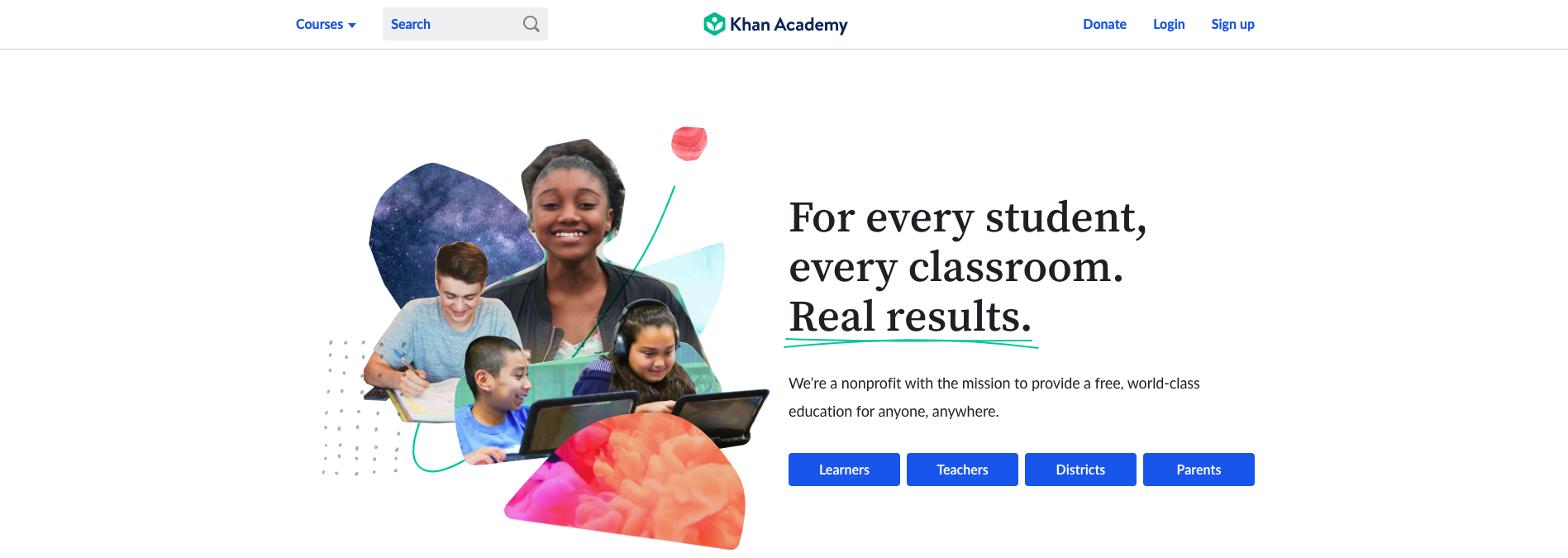
Our Verdict: A
We’ll give this to Khan Academy; it doesn’t beat around the bush. Which, when compared to other e-learning platforms, is a breath of fresh air. It doesn’t obnoxiously advertise that it offers top-tier education (which it does) for free (also true). It just asks you, right off the bat, if you’re there to learn, there to teach, or there for your kid.
Most of the courses are also geared towards younger people, and the visuals to emphasize this are absolutely charming. They make use of different characters with their own names and personalities. We can appreciate coding academies (and e-learning platforms in general) that can think of little ways to keep the learning interesting, interactive, and kid-friendly.
For instance, you get a cute little blob looking distressed and saying “Oh noes!” whenever you make a mistake with your script. For a younger audience, that’s definitely preferable over a very clinical, sterile “Error!” script flashing in their face.
To continue our Khan Academy review, let’s move on to the most important part, the learning process!
Learning Process & Learning Experience
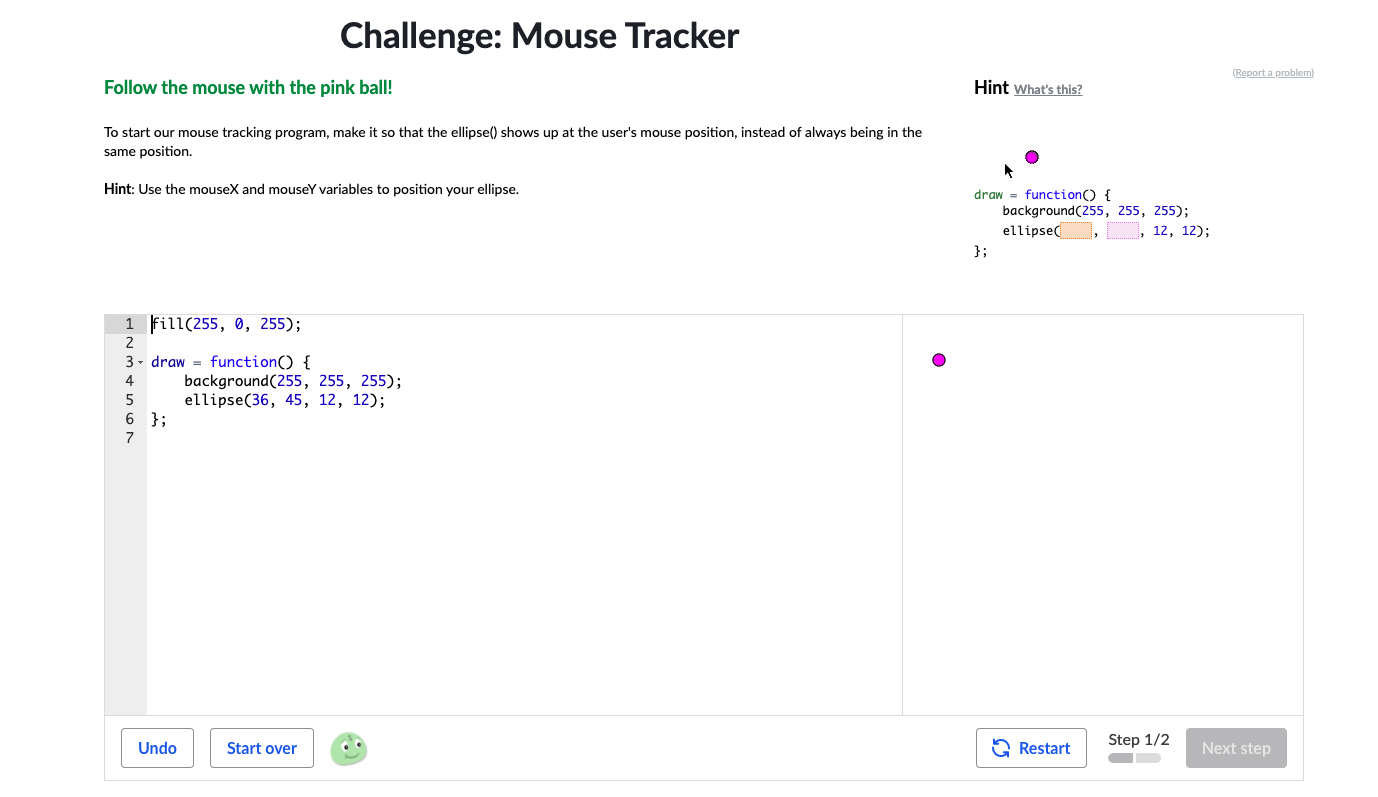
It’s pretty difficult to give objective feedback regarding the Khan Academy learning experience. Two reasons: (1) every student is unique and learns differently, and (2), not every course is taught the same way. But since we’re focusing on coding—specifically, coding for kids—we’ll review the computer science and computer programming lessons available.
Not to get too detailed about it, but one can appreciate the Khan Academy style of teaching. They use videos, interactive characters, and an online scriptwriter/coder for immediate, hands-on learning. For a course that covers a skill that’s kinesthetic and requires physical input, we’d say that’s a good call. In fact, we do believe that hands-on coding is really the only way to learn.
We also love the fact that you get an immediate overview of how many tasks and projects you have to do to complete the course. For instance, beginner programming has 101 tasks to complete. It might not be a lot for some, but others may find it to be too much. If you fall in the latter, knowing that there are 100+ projects for you to complete is nice to know.
This knowledge can help you decide whether or not you want to go through with it—or if you even have the time to!
With Khan Academy computer programming classes, students must complete a project and get a passing grade on it before they’re approved for the next lesson. As long as the student meets the objectives of the project in a way that is creative and properly implements what they’ve learned, they can move on.
For instance, in coding for kids, the child might be asked to “draw” what he/she had for dinner using shape and color commands.
What’s interesting is that other Khan Academy-certified students or coaches are in charge of evaluating the project and assigning the grade. This means that you can advance through lessons as soon as your “schoolmates” respond.
Frankly, this peer-review type of progress has its pros and cons. It’s quite easy to get evaluated and passed during the initial lessons because they implement fairly basic programming lessons. Anyone just a skill level (or lesson) higher can immediately see your project, grade it, and let you move on to the next topic.
At higher levels, there may not be enough coaches or students with the necessary expertise online when you are. That means you may have to wait a full day or two before you get any feedback. And if you fail the project, you have to wait again for a re-evaluation.
This can really slow down progress and, in turn, potentially discourage some people. The fact that you don’t have to pay for lessons either can make it easier for people to just give up halfway.
Our Verdict: B+
Despite the fact that the feedback/approval system isn’t streamlined, we still find the projects challenging and enjoyable. In fact, we can say with confidence that they play a huge role in Khan Academy’s success.
The projects are audience-appropriate, creative, and incredibly rewarding once you finish them. We find that this is especially important with coding for kids. Children do need to feel challenged from time to time, and they can appreciate a challenge more if completing it is incredibly satisfying.
We also love the social aspect of it. Students can save their works and upload it to the Khan Academy system for other users to view, vote, download, and modify as they like. The system then displays the project results that got the most votes—think like an Instagram trending page of animated vector images and coded animals.
This gallery can serve as inspiration. And for the truly competitive children, the possibility of getting featured can be a fine incentive, too.
Lesson Quality & Additional Features

So far, Khan Academy has a great interface and a pretty sweet learning system. How about the lessons themselves?
Well, Bill Gates did endorse the platform to TIME, telling them he was “amazed at the breadth of [the owners] subject expertise.” He also mentioned his ability to make complicated topics understandable.
Sounds good, yes, but he was saying this about a math lesson.
Do the coding subjects share the same quality?
Our Verdict: B
We can’t be very objective here either but, in our opinion, Khan Academy is an adequate way to teach coding for kids—and beginners. The video series format works quite well since you have the freedom to pause, play, and rewind as often as you need to.
The drawbacks of Khan Academy is the lack of physical guidance or one-on-one coaching, which is highly encouraged for first-time learners.
We here at CodaKid have gone through rigorous course development that taught us that one of the most effective ways for children to learn is by having a mentor be present, which is why we include online mentor support from professionals programmers in our curriculum.
You can find out more about enrolling your child in a free trial — CodaKid.
Khan Academy content itself is provided by certified industry specialists and professionals with great credentials. Their staff, editors, and contributors consist of art historians, graduate degree holders, Curriculum M.Ed. holders, licensed teachers, university instructors, certified biologists, chemists, and more.
Khan Academy also gives its students personalized dashboards and online portals. This is where most of the learning happens. They’ve also made it visually appealing and motivating—especially with their integrated “leveling” system.
As you pass courses and complete projects, you gain “Experience Points” (XP). These slowly fill up your progress bar—very much like a video game. For children who love video games, this is a great detail to keep them on track.
Khan Academy Review: Final Verdict
To recap our Khan Academy review, here is what we covered:
Table of Contents:
- What is Khan Academy?
- User Interface & Navigation
- Learning Process & Learning Experience
- Lesson Quality & Additional Features
- Khan Academy Review: Final Verdict
The bottom line?
If you’re interested in teaching coding for kids or if your own child is expressing an interest in programming, we can recommend Khan Academy for the introductory and basic courses.
The interface is good for younger audiences, the online lessons are equal parts practical and interactive, and the learning experience is very casual and rewarding.
However, no two learners are alike. Khan Academy provides coding courses that are one size fits all. For a subject like coding, more personalized experience with mentor support is highly recommended.
We have to applaud Khan Academy’s vision to provide a world-class education to everyone all over the world for no charge. It’s a noble enough cause and it definitely deserves support.
Given how education and technology continue to develop at a fairly rapid pace, we feel that Khan Academy will continue to improve as well. As it is now, it’s a great platform.
With a little work and more updates, it stands to truly redefine the education industry—and our definition of “world-class education.”
To find out more about CodaKid’s curriculum that includes more than 56 courses, 160 quests, and 525 challenges, and online mentor support, check out our course section to see what is covered!
What do you want us to review next? Comment below!









